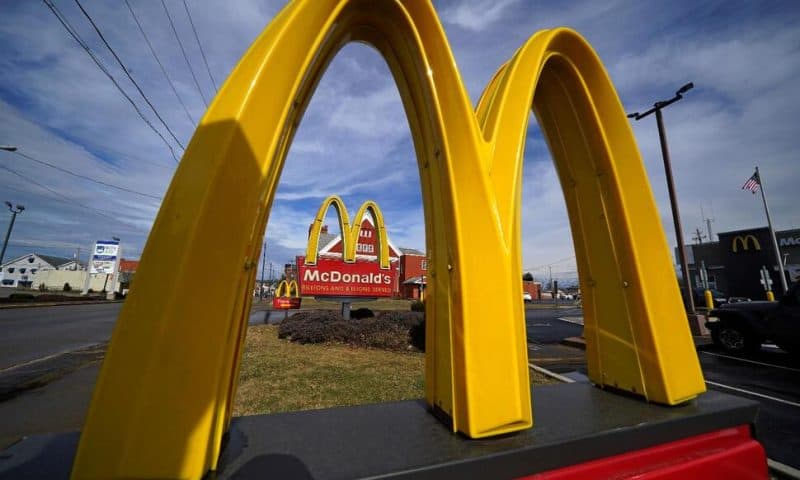McDonald’s global same-stores fell for the first time in nearly four years in the second quarter as inflation-weary consumers skipped eating out or chose cheaper options
They’re not lovin’ it.
McDonald’s global same-stores fell for the first time in nearly four years in the second quarter as inflation-weary consumers skipped eating out or chose cheaper options. The company said it’s working on fixes, like meal deals and new menu items, but it expects same-store sales to be down for the next few quarters.
“Consumers still recognize us as the value leader versus our key competitors, it’s clear that our value leadership gap has recently shrunk,” McDonald’s Chairman, President and CEO Chris Kempczinski said Monday during a conference call with investors. “We are working to fix that with pace.”
Sales at locations open at least a year fell 1% in the April-June period, the first decline since the final quarter of 2020, when the pandemic shuttered stores and millions stayed home.
In the U.S., same-store sales fell nearly 1%. McDonald’s saw fewer customers but it said those who came spent more because of price increases. Kempczinski defended the higher menu prices, saying the costs for paper, food and labor increased as much as 40% in some markets over the last few years.
It’s an issue that goes beyond the Chicago burger giant. Customer traffic at U.S. fast-food restaurants fell 2% in the first half of the year compared to the same period a year ago, according to Circana, a market research company. David Portalatin, a food industry advisor for Circana, expects high inflation and rising consumer debt will also dent traffic in the second half of 2024.
McDonald’s also reported lower store traffic in France and the Middle East, where people have been boycotting the chain because of a perception that it supports Israel in the war in Gaza. Kempczinski said weak consumer sentiment in China has customers fleeing to lower-priced rivals.
McDonald’s warned in April that more of its inflation-weary customers were seeking better value and affordability. The company introduced a $5 meal deal at U.S. restaurants on June 25, which was late in this financial reporting period.
McDonald’s U.S. President Joe Erlinger said Monday that $5 meal deal sales are running ahead of expectations and are getting lower-income consumers back into McDonald’s stores. Erlinger said 93% of McDonald’s franchisees have agreed to run the promotion through August.
Other countries, such as Germany and the United Kingdom, are also seeing success with meal deals, the company said. But Kempczinski said McDonald’s needs to be providing broader value and boosting that message with better marketing.
“Trying to move the consumer with one item or a few items is not sufficient for the context that we’re in,” he said.
New menu items are also in the works. The company is testing its value-oriented Big Arch double burger in three international markets through the end of this year, Kempczinski said.
For the second quarter, revenue was flat at $6.5 billion and just off the $6.6 billion that Wall Street was expecting, according to analysts polled by FactSet.
The company’s net income fell 12% to $2 billion, or $2.80 per share. Excluding one-time items such as restructuring charges, McDonald’s earned $2.97 per share. That was far from the per-share profit of $3.07 that industry analysts had forecast.
Investors appeared satisfied with the plans McDonald’s has to reverse its slide. McDonald’s shares rose 4% in morning trading Monday.

